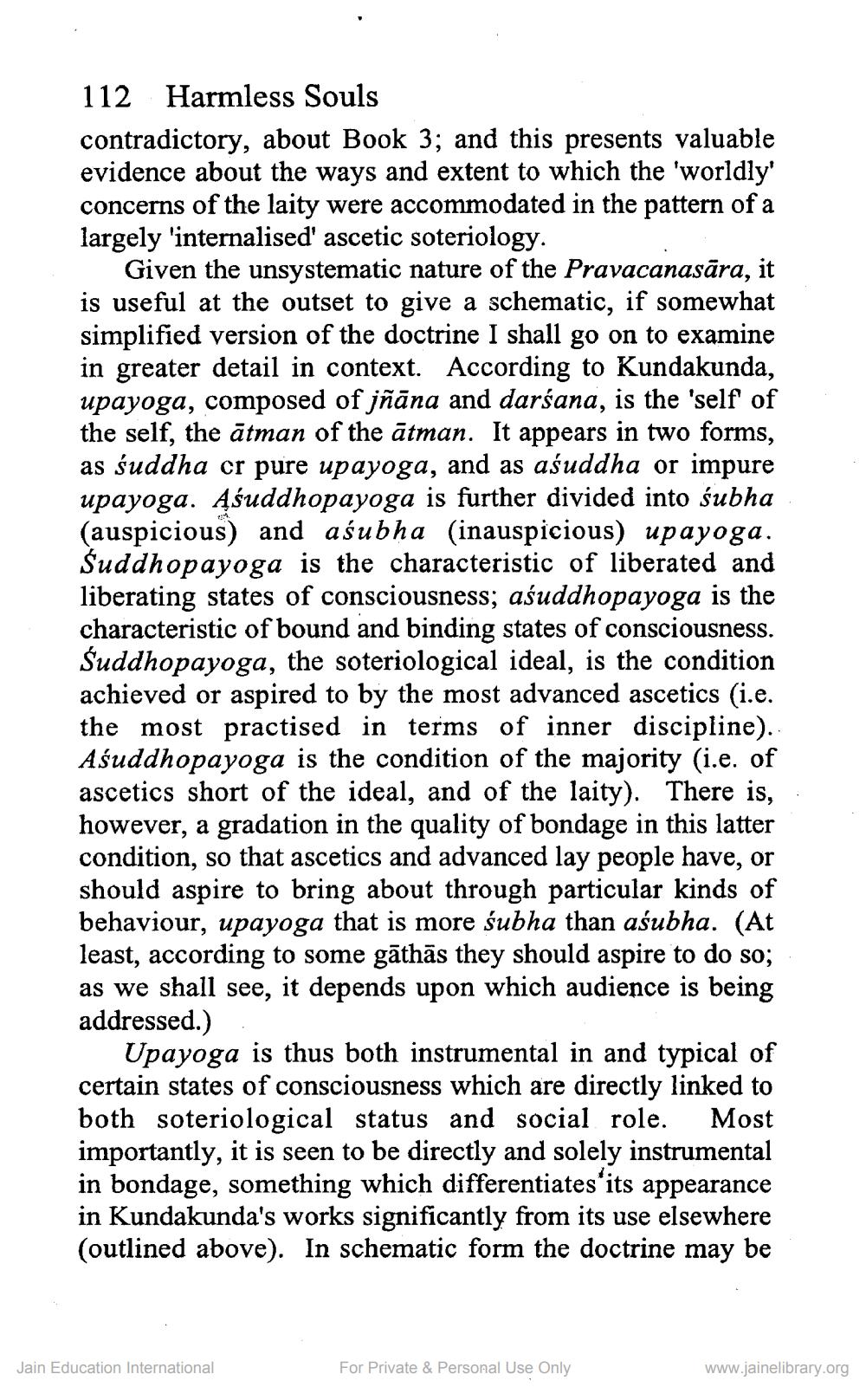________________
112 Harmless Souls contradictory, about Book 3; and this presents valuable evidence about the ways and extent to which the 'worldly' concerns of the laity were accommodated in the pattern of a largely 'internalised' ascetic soteriology.
Given the unsystematic nature of the Pravacanasāra, it is useful at the outset to give a schematic, if somewhat simplified version of the doctrine I shall go on to examine in greater detail in context. According to Kundakunda, upayoga, composed of jñāna and darśana, is the 'self of the self, the ātman of the ātman. It appears in two forms, as śuddha cr pure upayoga, and as aśuddha or impure upayoga. Ąśuddhopayoga is further divided into śubha (auspicious) and aśubha (inauspicious) upayoga. Suddhopayoga is the characteristic of liberated and liberating states of consciousness; aśuddhopayoga is the characteristic of bound and binding states of consciousness. Śuddhopayoga, the soteriological ideal, is the condition achieved or aspired to by the most advanced ascetics (i.e. the most practised in terms of inner discipline). Aśuddhopayoga is the condition of the majority (i.e. of ascetics short of the ideal, and of the laity). There is, however, a gradation in the quality of bondage in this latter condition, so that ascetics and advanced lay people have, or should aspire to bring about through particular kinds of behaviour, upayoga that is more śubha than aśubha. (At least, according to some gāthās they should aspire to do so; as we shall see, it depends upon which audience is being addressed.)
Upayoga is thus both instrumental in and typical of certain states of consciousness which are directly linked to both soteriological status and social role. Most importantly, it is seen to be directly and solely instrumental in bondage, something which differentiates its appearance in Kundakunda's works significantly from its use elsewhere (outlined above). In schematic form the doctrine may be
Jain Education International
For Private & Personal Use Only
www.jainelibrary.org




